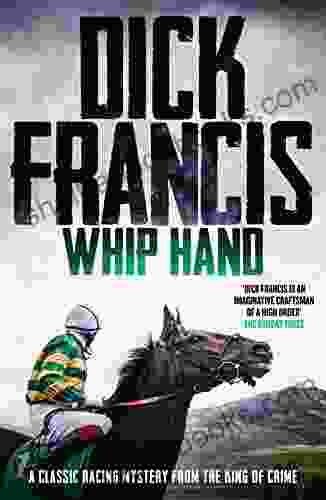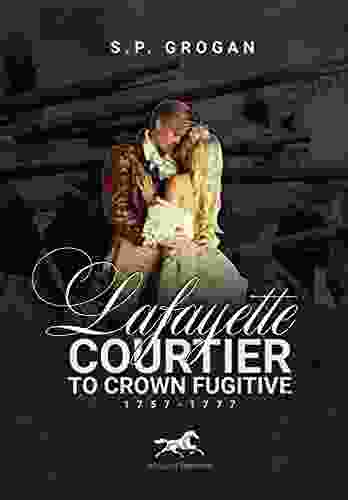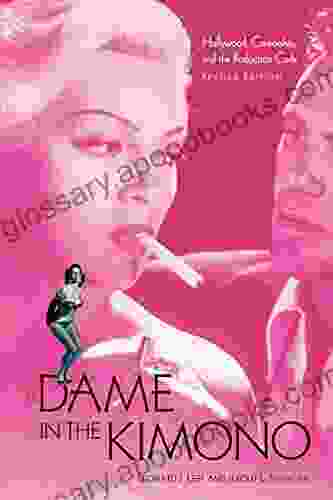Unveiling the Secrets: Hollywood Censorship and the Production Code

The golden age of Hollywood is often remembered as a period of glamour and cinematic brilliance. However, behind the glitz and glamour lurked a hidden force that shaped the content and themes of films for decades: the Production Code.
This article delves into the fascinating history of Hollywood censorship, exploring the origins, implementation, and far-reaching impact of the Production Code. We will uncover the moral guidelines that governed film production, the controversies they generated, and the lasting legacy this code left on the entertainment industry.
4.1 out of 5
| Language | : | English |
| File size | : | 7259 KB |
| Text-to-Speech | : | Enabled |
| Screen Reader | : | Supported |
| Enhanced typesetting | : | Enabled |
| Word Wise | : | Enabled |
| Print length | : | 420 pages |
| Lending | : | Enabled |
Origins of the Production Code
In the early days of filmmaking, movies were largely unregulated and often depicted controversial or risqué content. This led to widespread public outcry and concerns about the potential negative influence on society, particularly children.
In response, the Motion Picture Producers and Distributors of America (MPPDA) was formed in 1922. One of its primary goals was to establish a set of moral guidelines for film production to appease public demand for censorship.
The Production Code: Key Provisions
In 1930, the Production Code was officially adopted. It consisted of a set of detailed rules and regulations that governed every aspect of film content, including:
- Sex: Sexual acts, nudity, and suggestive language were strictly prohibited.
- Violence: Violence was permitted only if it was necessary for the plot and did not glorify violence or brutality.
- Religion: Religious beliefs and practices were not to be ridiculed or portrayed in a negative light.
- Race: Racial stereotypes and negative depictions of minorities were banned.
- Profanity: All forms of profanity were forbidden.
Implementation and Enforcement
The Production Code was not a law but rather a set of industry guidelines. However, it was enforced with the help of the Motion Picture Association of America (MPAA) and its Production Code Administration (PCA).
All films submitted to the PCA were reviewed and given a rating. Films that violated the code were given an "X" rating, which effectively banned them from theaters.
Controversies and Challenges
The Production Code faced numerous controversies and challenges over its decades-long existence. Critics argued that it was too strict and stifled creative expression.
Despite these criticisms, the code remained largely intact until the 1960s when changing social norms and a new generation of filmmakers pushed for greater creative freedom.
 This scene from a 1930s film depicts a suggestive dance move that would have been prohibited under the Production Code.
This scene from a 1930s film depicts a suggestive dance move that would have been prohibited under the Production Code.
Legacy of the Production Code
The Production Code was eventually replaced by a more lenient rating system in 1968. However, its legacy continues to influence film production today.
The code's strict moral guidelines shaped the narratives and characters of countless Hollywood films, leaving a lasting impression on American culture and values.
The Hollywood Production Code stands as a fascinating chapter in film history. It was a powerful force that shaped the content and themes of films for decades, influencing not only the entertainment industry but also the broader social and cultural landscape.
While the code is no longer in use today, its legacy remains in the ongoing debates over censorship and the role of the media in society.
4.1 out of 5
| Language | : | English |
| File size | : | 7259 KB |
| Text-to-Speech | : | Enabled |
| Screen Reader | : | Supported |
| Enhanced typesetting | : | Enabled |
| Word Wise | : | Enabled |
| Print length | : | 420 pages |
| Lending | : | Enabled |
Do you want to contribute by writing guest posts on this blog?
Please contact us and send us a resume of previous articles that you have written.
 Book
Book Novel
Novel Page
Page Chapter
Chapter Text
Text Story
Story Genre
Genre Reader
Reader Library
Library Paperback
Paperback E-book
E-book Magazine
Magazine Newspaper
Newspaper Paragraph
Paragraph Sentence
Sentence Bookmark
Bookmark Shelf
Shelf Glossary
Glossary Bibliography
Bibliography Foreword
Foreword Preface
Preface Synopsis
Synopsis Annotation
Annotation Footnote
Footnote Manuscript
Manuscript Scroll
Scroll Codex
Codex Tome
Tome Bestseller
Bestseller Classics
Classics Library card
Library card Narrative
Narrative Biography
Biography Autobiography
Autobiography Memoir
Memoir Reference
Reference Encyclopedia
Encyclopedia Nikki Van De Car
Nikki Van De Car Mike Evans
Mike Evans Go Green Publishing
Go Green Publishing Samuel W Mitcham
Samuel W Mitcham Ethan O Bryson
Ethan O Bryson James Hale
James Hale Lynette Eason
Lynette Eason Demarius Jackson
Demarius Jackson Toni Jensen
Toni Jensen Melanie Dobson
Melanie Dobson Duane F Smith
Duane F Smith Elizabeth Gaskell
Elizabeth Gaskell Wendy Owens
Wendy Owens Susan Simpson
Susan Simpson Jeffrey D Sachs
Jeffrey D Sachs Johnny Cash
Johnny Cash John S Dryzek
John S Dryzek Lynn Nodima
Lynn Nodima Ema Toyama
Ema Toyama Hana Meihan Davis
Hana Meihan Davis
Light bulbAdvertise smarter! Our strategic ad space ensures maximum exposure. Reserve your spot today!

 Francis TurnerEscape into the Enchanting Summer at Stallion Ridge: A Literary Journey with...
Francis TurnerEscape into the Enchanting Summer at Stallion Ridge: A Literary Journey with... Brenton CoxFollow ·9.6k
Brenton CoxFollow ·9.6k Devon MitchellFollow ·6.6k
Devon MitchellFollow ·6.6k Ethan GrayFollow ·5.2k
Ethan GrayFollow ·5.2k Gregory WoodsFollow ·10.7k
Gregory WoodsFollow ·10.7k Mike HayesFollow ·12.9k
Mike HayesFollow ·12.9k Chadwick PowellFollow ·9k
Chadwick PowellFollow ·9k Morris CarterFollow ·4.1k
Morris CarterFollow ·4.1k Elias MitchellFollow ·17k
Elias MitchellFollow ·17k

 Clarence Mitchell
Clarence MitchellCollection Of Handcrafted Plants For The Blackest Of...
Do you have a black...

 Edgar Hayes
Edgar HayesClassic Racing Mystery From The King Of Crime
Agatha Christie, the...

 Demetrius Carter
Demetrius CarterLafayette: Courtier to Crown Fugitive, 1757-1777
The Marquis de...

 Jared Powell
Jared Powell30 Gorgeous Sweaters, Cardigans, Hats, Toys & More:...
Immerse Yourself...
4.1 out of 5
| Language | : | English |
| File size | : | 7259 KB |
| Text-to-Speech | : | Enabled |
| Screen Reader | : | Supported |
| Enhanced typesetting | : | Enabled |
| Word Wise | : | Enabled |
| Print length | : | 420 pages |
| Lending | : | Enabled |














